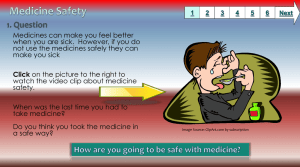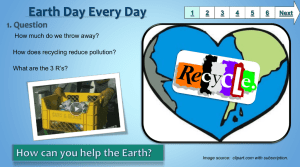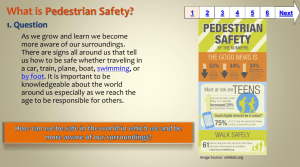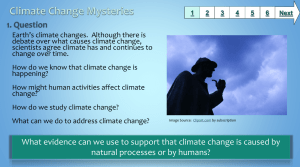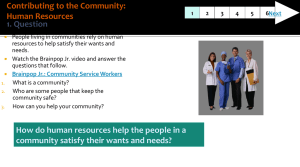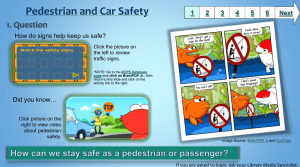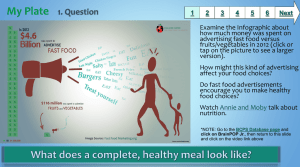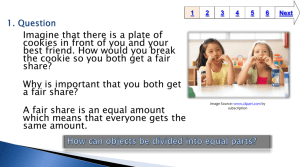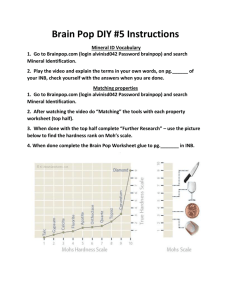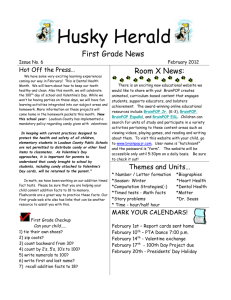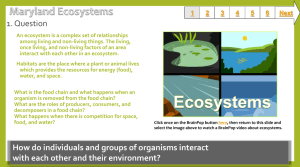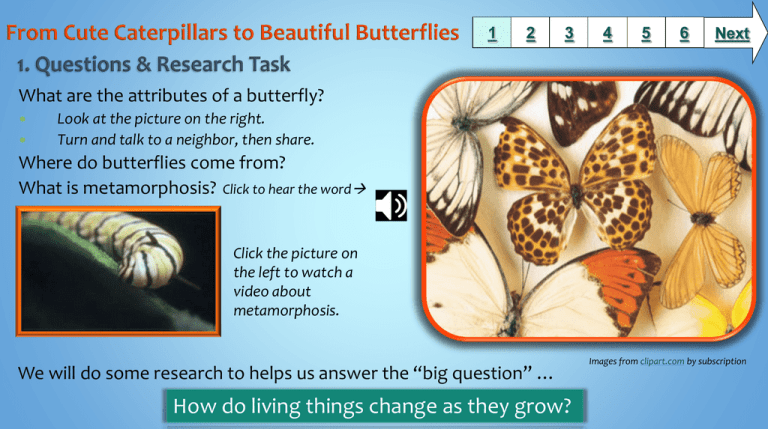
1
2
3
4
5
6
Next
What are the attributes of a butterfly?
Look at the picture on the right.
Turn and talk to a neighbor, then share.
Where do butterflies come from?
What is metamorphosis? Click to hear the word
Click the picture on
the left to watch a
video about
metamorphosis.
We will do some research to helps us answer the “big question” …
How do living things change as they grow?
Images from clipart.com by subscription
1
2.
2
3
4
5
6
Next
What is Metamorphosis?
1. All about Butterflies
3. Review New Vocabulary
Video and images courtesy of National Geographic.
Video and images courtesy of BrainPop &
BrainPopJr by subscription.
1
2
3
4
5
6
Next
1. From Caterpillar to Butterfly
3. Review the stages of the
Life Cycle
2. Quiz yourself
on what you
learned.
Video and images courtesy of BrainPopJr & SoftSchools by subscription.
1
2
3
4
5
6
Next
Click on the caterpillar picture to
complete the matching activity.
In a group of three, act out the stages of the life cycle of the
butterfly and record it with a video/flip camera.
1. One person will record, while the others perform. Rotate jobs until each has
had a chance to perform and use the camera.
2. Make sure to look at the camera and speak loudly and clearly.
3. Share your video with friends to explain about the life cycle of the butterfly.
Rubric ↓
1
1. Watch this BrainPop video about
the life cycle of the frog.
2.
Compare the life
cycles of a butterfly
and a frog.
2
3
4
5
6
Next
3. Explore and learn more
about Monarch butterflies.
Images: BrainPopJr & www.clipart.com by subscription.
1
BCPS Kindergarten Curriculum
Language and Literacy
Classifies information
- compares and categorizes
Speaks for a variety of purposes
- engages in meaningful conversation
- uses appropriate languages in order to inform, persuade, or to express personal ideas.
Uses pictures and print to perform a task
Science
Communicating Scientific Information
1. Ask, "How do you know?" in appropriate situations and attempt reasonable answers when others ask
them the same question.
Draw pictures(act out) that correctly portray at least some features of the thing being described and sequence
events (seasons, seed growth).
Have opportunities to work with a team, share findings with others, and recognize that all team members should
reach their own conclusions about what the findings mean.
Common Core State Standards
Reading: 1. Read closely to determine what the text says explicitly and to make logical inferences from it; cite specific
textual evidence when writing or speaking to support conclusions drawn from the text.
Speaking and Listening : 6. Speak audibly and express thoughts, feelings, and ideas clearly.
Standards for the 21st Century Learner
1.1.6 Read, view, and listen for information presented in any format (e.g. textual, visual, media, digital) in order to
make inferences and gather meaning.
2.1.3 Use strategies to draw conclusions from information and apply knowledge to curricular areas, real-world
situations, and further investigations.
Maryland Technology Literacy Standards for Students
3.0: Use a variety of technologies for learning and collaboration.
2
3
4
5
6
Time Frame:
2-4 class periods will be required to complete this activity.
Green
= Challenging, requiring teacher direction.
Yellow = Independent level, some may need help.
Blue
= For Everyone, self-paced with little support.
Learning Styles - Visual, auditory, kinesthetic.
Notes to the teacher/librarian:
You may need to authenticate BrainPop and BrainPop Jr. via
the BCPS One Digital Content portal before clicking on direct
links to BrainPop/BrainPop Jr. content in this Slam Dunk.
Students will require some instruction in using the Flipcam
before filming.
Last updated: July 2014
Created by Erin McElwee , Kindergarten Teacher, Library Cohort Summer Intern
BCPS Slam Dunk Research Model, Copyright 2013, Baltimore County Public Schools, MD, all rights reserved. The models may be used for educational, non-profit school use only.
All other uses, transmissions, and duplications are prohibited unless permission is granted expressly. This lesson is based on Sarah Szmajda and Debbie Sugarman’s ORM.

